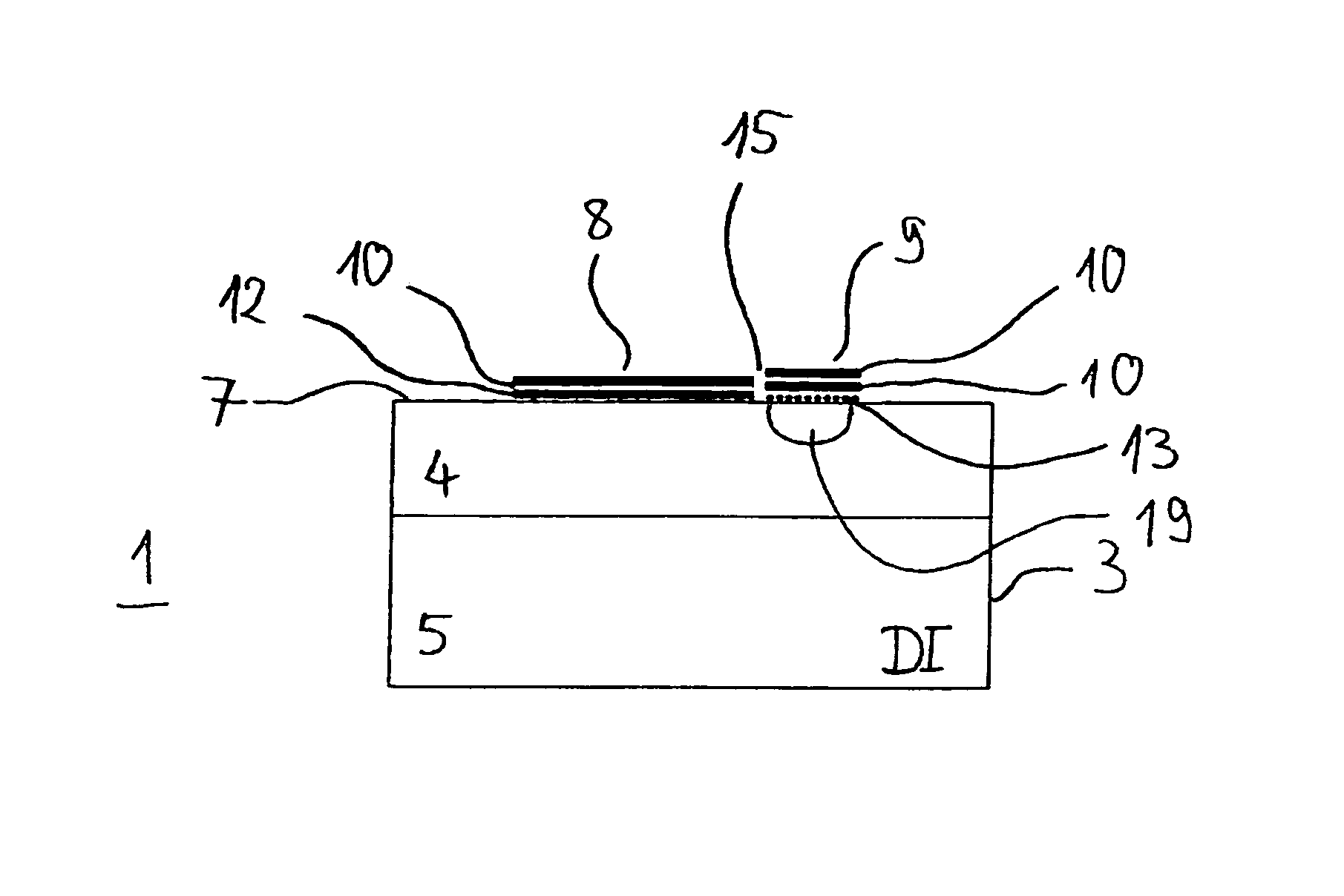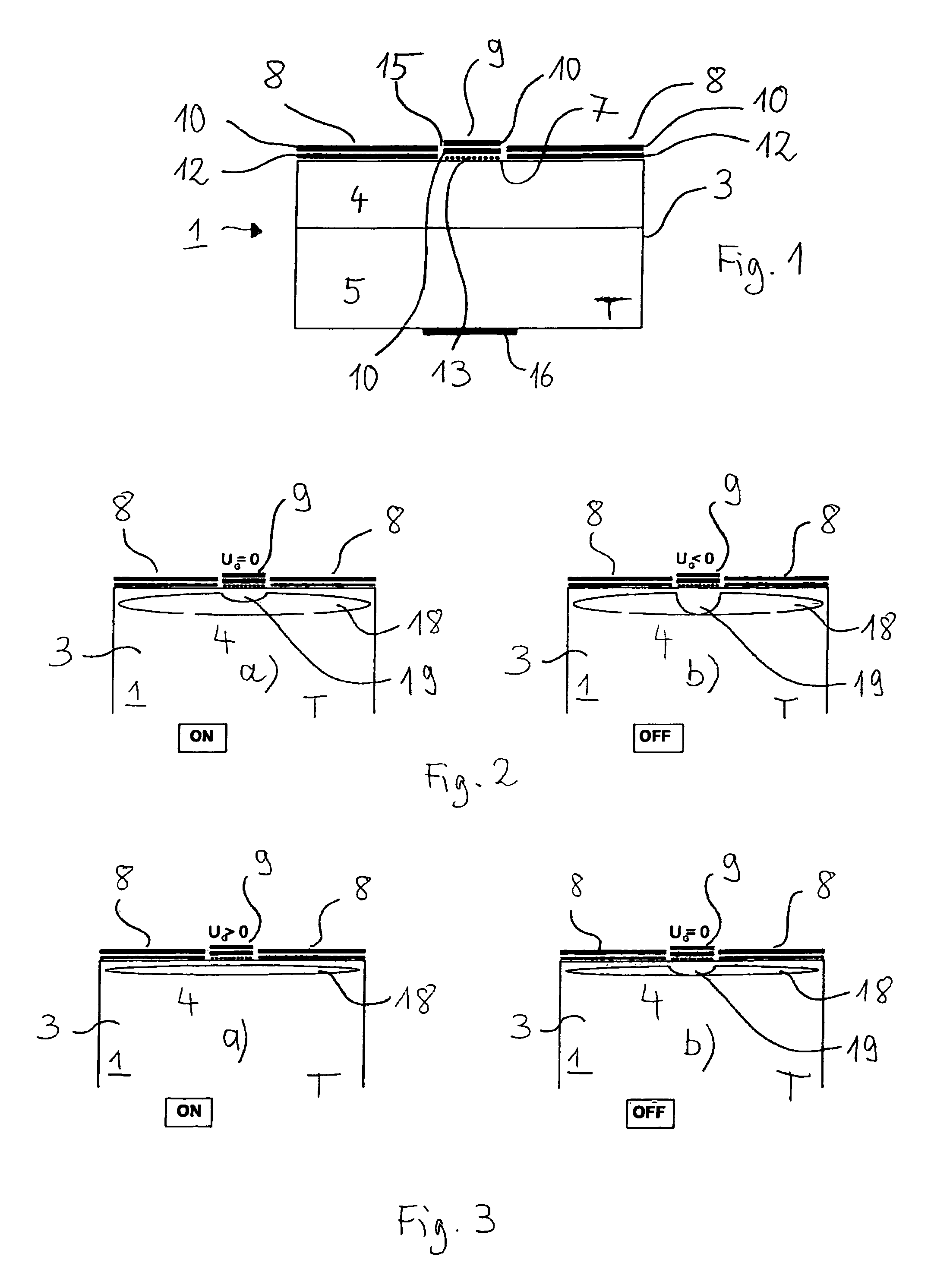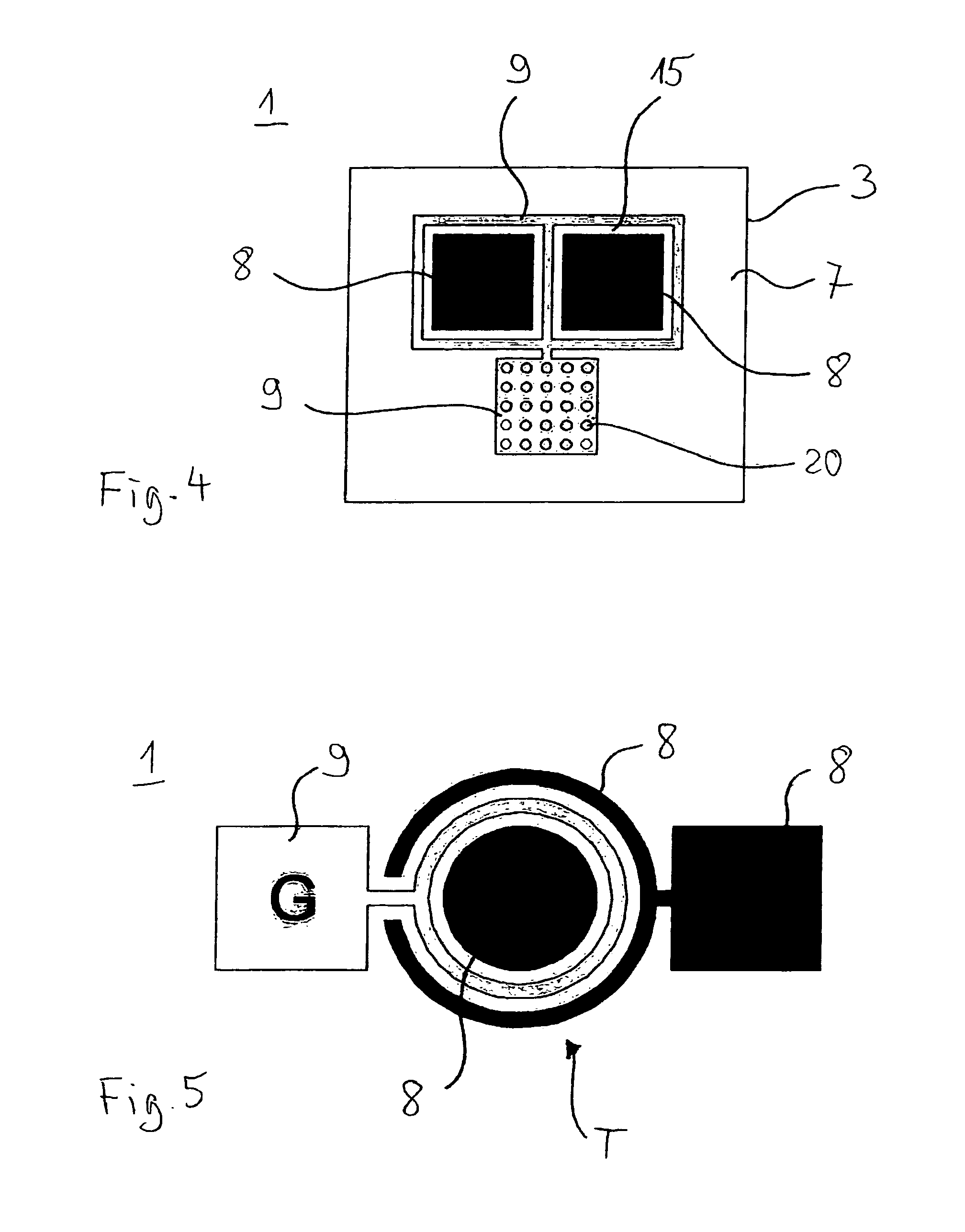Electronic device
a technology of electronic devices and electronic components, applied in semiconductor devices, diodes, capacitors, etc., can solve the problems of increasing requiring cryogenic operation temperatures or slow switching frequency, and not being able to accept the on/off ratio of respective active devices
- Summary
- Abstract
- Description
- Claims
- Application Information
AI Technical Summary
Benefits of technology
Problems solved by technology
Method used
Image
Examples
Embodiment Construction
[0054]FIGS. 1-3 are schematic cross-sectional views of electronic devices 1 having a semiconductor substrate 3. The semiconductor substrate 3 comprises a first zone 4, which is doped with n-type impurities, and a second zone 5, which is doped with p-type impurities. Only the first zone 4 of the substrate 3 is shown in FIGS. 2 and 3.
[0055]On the front surface 7 of the substrate 3 two first electrodes 8 and a second electrode 9 are disposed. The second electrode 9 is disposed between the two first electrodes 8. The first and the second electrodes 8, 9 each comprise at least one epitaxial graphene monolayer 10. The at least one epitaxial graphene monolayer 10 of the first electrodes 8 is forming an ohmic contact with the substrate 3. Between the epitaxial graphene monolayer 10 of the first electrode 8 and the surface 7 of the substrate 3 a carbon buffer layer 12 is exhibited. The at least one epitaxial graphene monolayer 10 of the second electrode 9 and the substrate 3 are forming a Sc...
PUM
 Login to View More
Login to View More Abstract
Description
Claims
Application Information
 Login to View More
Login to View More - R&D
- Intellectual Property
- Life Sciences
- Materials
- Tech Scout
- Unparalleled Data Quality
- Higher Quality Content
- 60% Fewer Hallucinations
Browse by: Latest US Patents, China's latest patents, Technical Efficacy Thesaurus, Application Domain, Technology Topic, Popular Technical Reports.
© 2025 PatSnap. All rights reserved.Legal|Privacy policy|Modern Slavery Act Transparency Statement|Sitemap|About US| Contact US: help@patsnap.com



